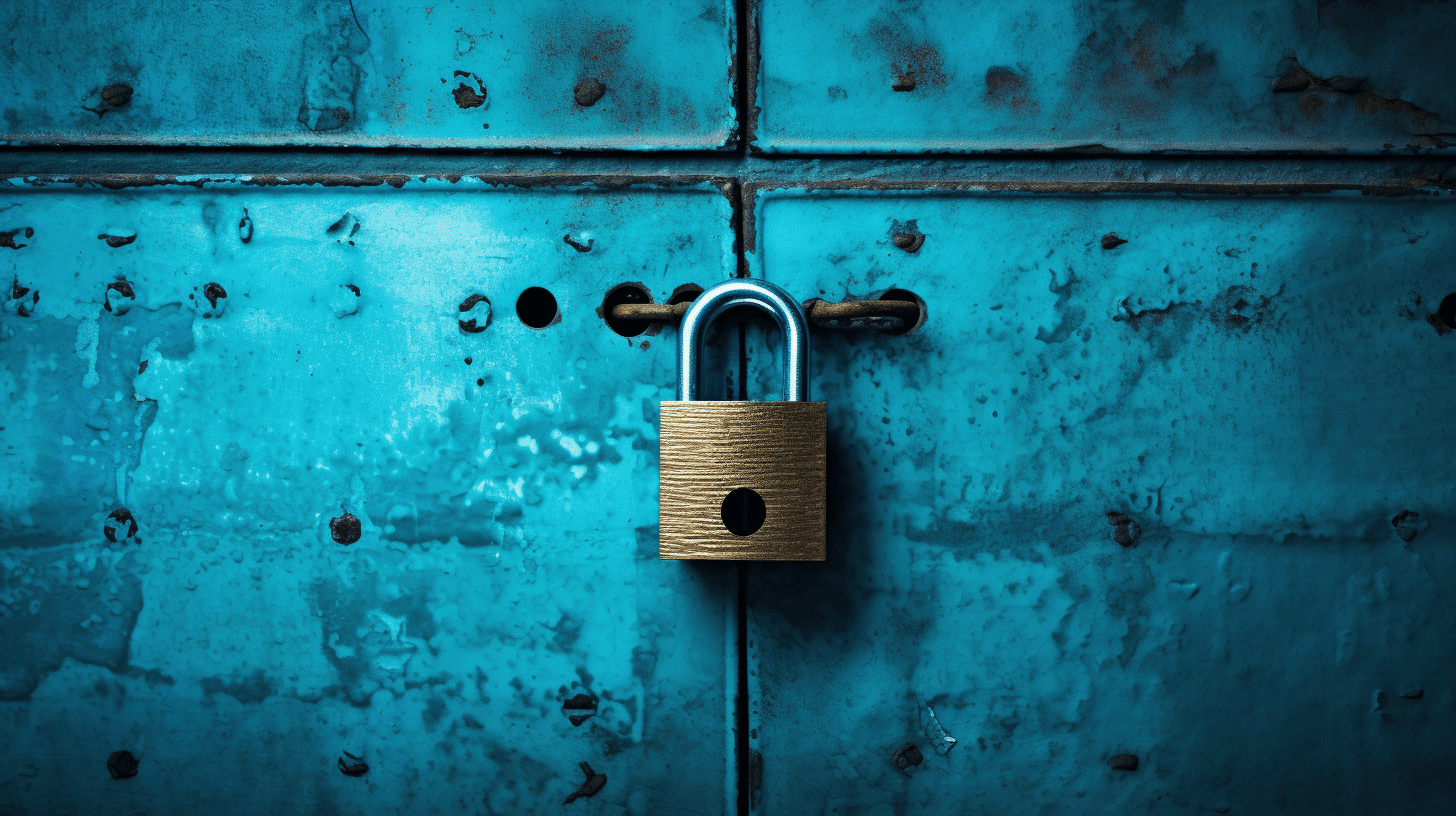WordPress 是世界上最受歡迎的內容管理系統 (CMS) 之一,為網路上超過 40% 的網站提供支援。它的靈活性和用戶友好的介面使其成為個人和企業的理想選擇。然而,人氣越高,責任就越大,特別是在安全方面。
保護您的 WordPress 網站免受駭客和惡意攻擊應該是首要任務。駭客一直在尋找可利用的漏洞,因此實施安全措施來保護您的網站及其資料至關重要。
在本文中,我們將探討提升 WordPress 網站安全性的十個重要技巧。從定期更新到安全託管服務提供者以及介於兩者之間的一切,這些提示將幫助您加強網站抵禦潛在威脅。那麼,讓我們深入學習如何讓您的 WordPress 網站更安全! 💪🔒
定期更新
保持你的 WordPress 網站更新不僅僅是為了保持時尚或視覺吸引力;這是確保網站安全性和穩定性的關鍵步驟。透過定期更新 WordPress、主題和插件,您可以防範已知漏洞和試圖利用這些漏洞的駭客。
🔒 保護您的網站免受漏洞攻擊
科技不斷發展,隨著時間的流逝,您的 WordPress 軟體、主題或外掛程式中可能會發現新的漏洞。這些漏洞可能為網路犯罪分子打開方便之門,使他們能夠未經授權存取您的網站、竊取有價值的資料、破壞您的內容,甚至劫持您的網站進行惡意活動。
透過定期更新,您將受益於 WordPress 社群發布的最新安全性修補程式和錯誤修復。持續的更新可確保及時解決可能發現的任何潛在安全漏洞,從而幫助保護您的網站免受潛在威脅。
✨ 保持領先地位
WordPress 是一個強大的內容管理系統 (CMS),為網路上的數百萬個網站提供支援。為了跟上不斷發展的網路標準、新功能和改進的功能,WordPress 會定期發布更新。這些更新通常附帶新功能、錯誤修復和效能增強,可以提高您網站的整體效能和使用者體驗。
值得注意的是,透過更新您的網站,您不僅可以提高其安全性,還可以確保與最新的網路技術的兼容性。這有助於防止與較新的瀏覽器、行動裝置或其他第三方整合出現任何相容性問題,確保您的網站能夠順利為所有使用者運作。
💡 如何讓您的網站保持最新狀態
現在您已經了解了定期更新的重要性,讓我們來探討如何確保您的 WordPress 網站保持最新狀態:
- 更新 WordPress 核心: WordPress 會定期發布更新,當有更新可用時,您會在儀表板上收到通知。只需點擊更新按鈕,WordPress 將引導您完成整個過程。
- 保持主題最新: 如果您在 WordPress 網站上使用主題,請定期檢查主題開發人員提供的更新。更新您的主題以受益於錯誤修復、安全性修補程式和任何發布的新功能。
- 更新外掛: 外掛程式是擴展 WordPress 網站功能的絕佳工具。但是,與主題一樣,定期更新外掛程式也至關重要。始終留意插件開發人員的更新並相應地應用它們。
請記住,保持您的網站更新是一個持續的過程。根據 WordPress、主題開發人員和外掛作者的發布頻率,設定每週或每月檢查更新的時間表。
透過優先進行定期更新,您可以確保 WordPress 網站的安全性、穩定性和最佳效能。保持警惕,留意更新,並保護您的網站免受潛在漏洞的侵害。
使用 SSL/TLS 憑證
在當今數位時代,網路安全至關重要。隨著網路威脅變得越來越複雜和普遍,採取主動措施保護用戶資料至關重要。增強網站安全性的一個有效方法是使用 SSL/TLS 憑證。
為什麼要使用 SSL/TLS 憑證?
使用 SSL/TLS 憑證有助於保護傳輸中的使用者數據,確保網站與使用者之間的安全通訊。當網站安裝 SSL/TLS 憑證時,它會啟用資料加密,使得惡意行為者幾乎不可能攔截和解密敏感訊息,例如密碼、信用卡詳細資料或個人資料。
SSL/TLS 憑證的工作原理
SSL/TLS(安全通訊端層/傳輸層安全性)協定在 Web 伺服器和使用者瀏覽器之間建立加密連線。這種加密可確保兩個端點之間傳輸的任何資料的機密性。
以下是 SSL/TLS 憑證工作原理的簡化分解:
- 使用者透過瀏覽器造訪受 SSL/TLS 憑證保護的網站。
- Web 伺服器提供其 SSL/TLS 憑證給使用者的瀏覽器。
- 瀏覽器透過受信任的憑證授權單位 (CA) 驗證憑證的真實性。
- 如果憑證有效,瀏覽器和伺服器將建立安全加密連線。
- 用戶和伺服器之間交換的任何資料都經過加密,以防止被攔截。
為什麼要在 WordPress 上安裝 SSL/TLS 憑證?
如果您經營 WordPress 網站,安裝 SSL/TLS 憑證尤其重要,原因如下:
- 資料安全: SSL/TLS 憑證提供了額外的安全層,防止未經授權存取敏感使用者資料。
- 信任與信譽: 當訪客在瀏覽器的網址列中看到掛鎖圖示或「https://」前綴時,他們就知道與網站的連線是安全的。這可以增強他們對您的網站和品牌的信任。
- 搜尋引擎優化的好處: 像 Google 這樣的搜尋引擎優先考慮安全的網站,擁有 SSL/TLS 憑證可以對您的搜尋引擎排名產生積極影響。
- 遵守: 許多行業對於用戶資料保護都有具體的規定,例如 GDPR。透過使用 SSL/TLS 證書,您可以證明自己致力於資料隱私和合規性。
如何在 WordPress 上安裝 SSL
如果你已經準備好邁向更安全的網站,你可以按照以下逐步指南進行操作 如何在 WordPress 上安裝 SSL。它將引導您完成整個過程,確保安裝順利且成功。
請記住,使用 SSL/TLS 憑證是保護您的網站和使用者的重要方面。透過實施這項關鍵的安全措施,您可以提供更安全的數位環境並贏得訪客的信任。
實施使用者名稱和密碼最佳實踐
在日益數位化的世界裡,我們的大多數個人和敏感資訊都儲存在網路上,因此優先考慮我們帳戶的安全性至關重要。對於像 WordPress 這樣的平台來說尤其如此,一旦出現漏洞可能會對個人和企業造成嚴重後果。因此,實施使用者名稱和密碼最佳實踐變得至關重要。
強大而獨特的憑證的重要性
在為您的 WordPress 帳戶建立使用者名稱和密碼時,需要牢記一些關鍵原則。強大而獨特的憑證是健全的安全策略的基石。原因如下:
- 防範暴力攻擊:暴力攻擊是一種駭客技術,其中自動系統透過測試多種組合來嘗試猜測您的使用者名稱和密碼,直到找到正確的組合。透過使用強大而獨特的憑證,攻擊者可以更難以破解您的登入資訊。
- 防止憑證填充:當駭客使用從一個平台竊取的使用者名稱和密碼來未經授權存取另一個平台時,就會發生憑證填充。透過為每個帳戶使用唯一的憑證,您可以消除此類攻擊的風險。
- 保護敏感資料:您的 WordPress 帳戶可能包含敏感資訊或提供對重要資源的存取權。透過使用強大而獨特的憑證,您可以降低未經授權的存取和潛在資料外洩的可能性。
使用者名稱和密碼的最佳實踐
現在我們了解了強大而獨特的憑證的重要性,讓我們探索在 WordPress 中建立使用者名稱和密碼的一些最佳做法:
- 使用者名稱:
- 避免使用通用或容易猜到的使用者名,例如“admin”或“user”。發揮創意並選擇一些獨特的東西。
- 也建議不要使用您的電子郵件地址作為您的用戶名,以盡量減少遭受憑證填充攻擊的風險。
- 確保您的用戶名不公開顯示,以防止潛在的攻擊者輕易識別您的帳戶。
- 密碼:
- 創建長而複雜的密碼,其中包含大寫和小寫字母、數字和特殊字元。
- 避免在密碼中使用常用字詞、個人資訊或可預測的模式。
- 對每個帳戶使用不同的密碼,以防止憑證填充攻擊。
- 考慮使用密碼管理器來安全地產生和儲存複雜的密碼。
透過遵循這些最佳實踐,您可以顯著增強 WordPress 帳戶的安全性並降低未經授權的存取或資料外洩的風險。
請記住,強大而獨特的資質只是難題的一個面向。定期更新您的密碼、啟用雙重認證 (2FA) 以及保持您的 WordPress 安裝和外掛程式為最新版本都是同樣重要的措施,可以增強您的整體安全態勢。
總之,實施使用者名稱和密碼最佳實踐對於提高 WordPress 安全性至關重要。強大而獨特的憑證可以作為抵禦暴力攻擊、憑證填充和未經授權存取敏感資料的強大屏障。透過遵循推薦的最佳實踐,您可以強化您的 WordPress 帳戶並保護您自己和您的網站免受潛在威脅。
限制登入嘗試
🔒 使用簡單但有效的安全措施來保護您的 WordPress 管理區域:限制登入嘗試。透過實現此功能,您可以阻止暴力攻擊並保護您的網站免遭未經授權的存取。
它是如何運作的?當使用者嘗試登入您的 WordPress 管理區域時,他們通常可以進行無限次登入嘗試。這使得駭客更容易使用自動化工具猜測密碼並訪問您的網站。但是,透過限制登入嘗試次數,您可以為使用者在被暫時或永久鎖定之前可以進行的失敗登入嘗試次數設定一個閾值。
讓我們仔細看看啟用此功能的好處和步驟:
限制登入嘗試的好處
- 提高安全性:透過限制登入嘗試次數,您可以讓駭客更難以未經授權存取您的 WordPress 管理區域。這對暴力攻擊具有強大的威懾作用。
- 防範機器人攻擊:自動機器人可以反覆嘗試猜測密碼並侵入您的網站。透過設定登入嘗試限制,您可以阻止這些惡意機器人並確保您的網站安全。
- 密碼保護:限制登入嘗試次數可確保使用者不會使用弱密碼或容易猜測的密碼。透過防止多次登入嘗試,您可以鼓勵使用者使用更強、更安全的密碼,從而增強網站的整體安全性。
如何在 WordPress 中啟用登入嘗試限制
若要啟用登入嘗試限制,您可以使用各種 WordPress 插件,例如:
| 插件名稱 | 等級 |
|---|---|
| 限制重新載入登入嘗試次數 | ⭐⭐⭐⭐⭐ |
| 字柵欄安全 | ⭐⭐⭐⭐ |
| 登入鎖定 | ⭐⭐⭐ |
這些外掛程式可讓您輕鬆配置登入嘗試限制設置,例如登入嘗試失敗的最大次數和鎖定持續時間。此外,他們還提供電子郵件通知和日誌記錄等有用的功能,讓您隨時了解任何可疑的登入活動。
實施登入嘗試限制是加強 WordPress 網站安全性的關鍵步驟。透過限制登入嘗試次數,您可以顯著降低未經授權存取的風險並更好地控制您網站的管理區域。所以,不要再等了—立即採取行動來保護您的 WordPress 網站!
選擇安全的 WordPress 託管服務提供者
介紹
在 WordPress 上建立網站時,選擇安全的託管服務提供者至關重要。隨著網路威脅和潛在安全漏洞的不斷增加,保護您的網站應該是首要任務。幸運的是,有一些信譽良好的託管服務供應商,他們優先考慮安全性並提供可靠的服務。其中一個提供者是 WordPress 託管。在本節中,我們將探討選擇安全的 WordPress 託管服務提供者的重要性以及它如何使您的網站受益。
為什麼要選擇安全的 WordPress 託管服務提供者?
- 增強的安全措施: 安全的託管服務提供者將實施強大的安全措施來保護您的網站免受駭客、惡意軟體和其他網路威脅。他們通常會設置防火牆、入侵偵測系統並定期進行安全審核,以確保您的資料和網站的安全。
- 定期更新和維護: 安全漏洞可能由過時的 WordPress 版本或外掛程式引起。信譽良好的託管服務提供者將確保您的 WordPress 安裝定期更新到最新版本,以防止潛在的安全漏洞。
- DDoS 防護: 分散式阻斷服務 (DDoS) 攻擊會使您的網站流量過大,導致網站癱瘓。安全託管服務提供者將採取 DDoS 保護措施來偵測和緩解此類攻擊,確保您的網站仍可供訪客存取。
- 24/7監控: 有了安全的託管服務供應商,您就可以放心,因為您的網站正在受到全天候的監控。任何可疑活動或潛在的安全威脅都將及時偵測和處理,從而最大限度地減少停機時間並保護您的線上狀態。
- 備份與復原: 事故時有發生,網站也可能遭遇資料遺失或損壞。安全的託管服務提供者通常會定期備份您的網站數據,以便您在發生任何不可預見的問題時將其恢復到先前的安全狀態。
結論
選擇安全的 WordPress 託管服務提供者對於保護您的網站免受潛在的安全漏洞至關重要。擁有增強的安全措施、定期更新、DDoS 保護、全天候監控以及備份和復原選項,像 WordPress 託管 可以確保您網站的安全性和完整性。當涉及到您的線上狀態時,不要在安全方面妥協—選擇優先保護您的網站和資料的託管服務提供者。
定期掃描和監控您的網站
在當今的數位環境中,定期掃描和監控您的網站對於確保其安全並保護其免受潛在漏洞的侵害至關重要。隨著惡意軟體、駭客和網路攻擊威脅的不斷增加,主動保護您的網站至關重要。透過定期掃描和監控您的 WordPress 網站,您可以在任何安全問題升級為重大問題之前檢測並解決它們。
為什麼要定期掃描和監控您的網站?
定期網站掃描和監控可以為您的 WordPress 網站帶來幾個主要好處:
- 偵測惡意軟體和安全性問題: 定期掃描您的網站可以讓您識別任何惡意軟體感染或安全漏洞的跡象。這種主動方法使您能夠立即採取行動,並防止對您網站的聲譽和使用者體驗造成潛在損害。
- 識別漏洞: 透過定期掃描,您可以發現網站程式碼、外掛程式或主題中的任何弱點或漏洞。這些資訊可協助您及時解決這些漏洞,並確保您的網站保持安全且不受駭客的任何潛在入口點的影響。
- 保護用戶資料: 隨著人們對資料隱私和保護的關注日益增加,優先考慮網站上使用者資料的安全性至關重要。定期掃描和監控可協助您識別任何潛在的違規行為或未經授權的存取嘗試,從而確保使用者的敏感資訊保持安全。
- 維護網站效能: 惡意軟體感染和安全性問題會嚴重影響您網站的效能和載入速度。透過掃描和監控您的網站,您可以檢測到任何可能減慢網站速度的問題,並採取必要的措施來優化其效能。
- 領先新興威脅: 網路安全威脅不斷演變,新技術和漏洞不斷湧現。透過定期掃描和監控您的網站,您可以了解最新的安全威脅,並可以採取主動措施保護您的網站免受這些新出現的風險。
如何掃描和監控您的 WordPress 網站?
當涉及掃描和監控您的 WordPress 網站時,有幾種工具和做法可以幫助您完成這項工作。一些建議的方法包括:
- 使用安全插件: 安裝信譽良好的安全插件,如 Sucuri、Wordfence 或 iThemes Security。這些插件提供全面的掃描和監控功能,包括惡意軟體偵測、防火牆保護和漏洞檢查。
- 執行常規手動掃描: 使用 VirusTotal 或 Qualys 等線上安全掃描程序進行手動掃描。這些工具可讓您掃描您的網站以查找已知的惡意軟體簽名和漏洞。
- 保持更新: 保持您的 WordPress 核心、外掛和主題為最新版本。定期檢查更新並及時安裝以修補任何安全漏洞。
- 監控網站日誌: 定期檢查您的網站日誌中是否有任何可疑活動,例如多次登入失敗或未經授權的存取嘗試。這些日誌可以為潛在的安全問題提供寶貴的見解。
- 備份您的網站: 定期備份您的網站,以確保在發生任何安全漏洞或事故時您擁有資料的副本。
請記住,網站安全是一個持續的過程。定期掃描和監控對於維護 WordPress 網站的完整性和安全性至關重要。
最後的想法
定期掃描和監控您的 WordPress 網站是否有惡意軟體和安全性問題是保護您的線上狀態的基本步驟。透過主動方法並保持警惕,您可以降低風險、保護用戶資料並確保流暢、安全的用戶體驗。
所以,不要等到安全漏洞發生。立即採取必要的措施,定期掃描和監控您的網站,加強其安全防禦,並領先潛在威脅一步。您的網站安全掌握在您手中!
安裝可靠的安全插件
介紹:
在當今的數位環境中,保護您的網站安全比以往任何時候都更加重要。由於駭客和網路犯罪分子不斷尋找漏洞,因此採取主動措施保護您的 WordPress 網站至關重要。一種有效的方法是安裝可靠的安全插件。本文將深入探討使用安全插件的好處,討論其在保護您的網站方面的作用,並提供值得考慮的頂級插件的建議。
為什麼要安裝安全插件?
安裝可靠的安全插件可以提供額外的保護層來抵禦各種威脅。這些外掛程式旨在加強您網站的防禦能力,掃描漏洞並降低安全風險。以下是您應該為 WordPress 網站安裝安全性外掛的幾個令人信服的理由:
- 惡意軟體檢測與移除: 可靠的安全插件可以偵測並刪除您網站上的惡意程式碼或惡意軟體。它會定期掃描以識別任何可疑活動,並及時提醒您潛在的威脅。
- 防火牆保護: 安全插件通常包括防火牆功能,以保護您的網站免受未經授權的存取和暴力攻擊。這些防火牆監控傳入的流量並過濾掉潛在的有害請求,確保只有合法使用者才能造訪您的網站。
- 登入保護: 安全插件可以採取措施來保護您的登入頁面。它可以強制執行強密碼要求,限制登入嘗試次數,並啟用雙重認證,使駭客更難以獲得未經授權的存取。
- 網站強化: 安全插件提供一系列功能來加強您網站的安全性。這些可以包括隱藏有關您網站的重要資訊、保護敏感檔案和目錄以及封鎖可疑 IP 位址。
- 定期更新和支援: 安全的一個關鍵方面是保持插件和主題為最新版本。安全性外掛通常會提供定期更新以解決漏洞並保持與最新 WordPress 版本的兼容性。如果您遇到任何問題,他們還提供全面的支援。
頂級 WordPress 安全性外掛:
在為您的 WordPress 網站選擇可靠的安全性外掛時,有幾種選擇需要考慮。以下是一些提供強大安全功能的頂級外掛程式:
- 字柵欄:Wordfence 是最受歡迎的安全插件之一。它提供一系列功能,如惡意軟體掃描、防火牆保護和即時威脅情報,以確保您的網站安全。
- 惡意護理:MalCare 是一個全面的安全插件,它結合了強大的掃描演算法和易於使用的介面。它包括惡意軟體偵測、登入保護和網站強化等功能,以確保您的 WordPress 網站的安全。
- 蘇庫裡:Sucuri 是一款值得信賴的安全插件,提供一套安全解決方案。它提供惡意軟體掃描、網站防火牆、暴力破解保護和內容交付網路 (CDN) 整合等功能,以增強效能。
- i主題安全:iThemes Security 是一款受歡迎的插件,以其用戶友好的介面和強大的安全功能而聞名。它提供惡意軟體掃描、暴力破解保護、檔案變更偵測和資料庫備份等功能。
請記住,雖然安裝安全性外掛程式是保護您的 WordPress 網站的重要一步,但遵循最佳做法也同樣重要,例如使用強密碼、保持 WordPress 版本更新以及定期備份您的網站。透過結合這些措施,您可以建立強大的防禦以抵禦潛在的安全威脅,並確保您的 WordPress 網站的持續安全。
啟用雙重認證
在當今數位時代,網路安全至關重要。隨著網路威脅變得越來越複雜,採取一切預防措施保護您的敏感資訊至關重要。增強線上安全性的一個有效方法是啟用雙重認證 (2FA)。
什麼是雙重認證?
雙重認證(也稱為 2FA)要求使用者提供密碼和輔助驗證方法,從而增加了一層額外的安全性。這種次要方法通常 你 例如發送到你的行動裝置的唯一代碼,或是其他什麼東西 你 例如指紋或臉部辨識。
透過啟用 2FA,您可以大大降低未經授權存取您的帳戶的風險,即使有人設法取得您的密碼。如果沒有二次驗證,他們將無法登入。
雙重身份驗證如何運作?
當您在帳戶上啟用 2FA 時,流程通常涉及以下簡單步驟:
- 提供您的密碼作為身份驗證的第一步。
- 選擇您喜歡的輔助驗證方法:可以透過簡訊接收唯一代碼、使用身份驗證器應用程式或使用指紋等生物特徵資料。
- 出現提示時,輸入二次驗證碼或掃描您的生物特徵資料。
完成這些步驟後,您將成功為該特定帳戶啟用 2FA。
啟用雙重認證的好處
透過啟用雙重身分驗證,您可以採取主動措施來保護您的線上帳戶。以下是一些主要優點:
- 增強安全性:增加額外的驗證層可確保即使您的密碼被洩露,您的帳戶仍然是安全的。
- 防範網路釣魚攻擊:2FA 讓網路釣魚攻擊者更難以未經授權存取您的帳戶。即使他們誘騙您提供密碼,他們也不會有必要的二次驗證方法。
- 安心:使用 2FA,您可以放心,您的帳戶可以獲得更好的保護,防止未經授權的存取。
- 普遍採用:許多流行的線上平台,包括社交媒體網路、電子郵件提供者和銀行服務,現在都提供啟用 2FA 的選項。這意味著您可以加強跨各個平台的多個帳戶的安全性。
如何啟用雙重認證
啟用2FA的流程可能會因平台或服務提供者的不同而略有不同,但一般步驟如下:
- 登入您的帳戶並導航至安全設定。
- 尋找啟用雙重認證或 2FA 的選項。
- 選擇您喜歡的輔助驗證方法。
- 請依照螢幕上的指示完成設定。
請記住選擇適合您的偏好並提供最高等級安全性的驗證方法。如果可用,您可以選擇身份驗證器應用程式或生物識別身份驗證,因為這些方法通常比簡訊代碼更安全。
結論
啟用雙重認證是增強線上安全性的簡單但有效的方法。透過要求輸入密碼和二次驗證方法,您可以顯著降低未經授權存取您的帳戶的風險。隨著網路威脅的普遍,採取一切預防措施保護您的敏感資訊至關重要。那麼,為什麼要等待呢?立即採取行動並在您的帳戶上啟用 2FA 以保護您的數位存在。
定期備份
在網站安全領域,定期備份的重要性怎麼強調也不為過。安全事件發生不是「是否」的問題,而是「何時」的問題。做好準備並制定備份計劃可以讓你避免很多麻煩和潛在的資料遺失。
為什麼備份對網站安全至關重要?
- 防止駭客攻擊和安全事件: 備份充當安全網,當您的網站遭受駭客攻擊或其他安全事件時,它可以讓您將您的網站還原到以前的狀態。有了最近的備份,您可以輕鬆地將您的網站恢復到原始的安全狀態。
- 應對人為錯誤: 我們都是人,都會犯錯。無論是意外刪除重要文件還是進行導致網站故障的更改,備份都可以確保您可以輕鬆回滾到以前的工作版本,而不會帶來任何麻煩。
- 從伺服器故障中恢復: 伺服器故障可能意外發生,導致伺服器上儲存的資料遺失。定期備份可確保您的網站資料不完全依賴伺服器,並且可以在發生此類故障時復原。
多久應該進行一次備份?
備份的頻率很大程度取決於您的網站的性質和內容更新率。但是,根據一般經驗法則,建議進行備份:
- 日常的: 如果您的網站經常更新內容或處理敏感的使用者數據,例如電子商務網站或定期由使用者產生內容的部落格。
- 每週: 適用於內容更新適度或不處理敏感使用者資料的網站。這個備份頻率在安全性和資源使用之間取得了平衡。
- 每月: 適用於靜態網站或內容更新最少的網站。儘管發生頻率較低,但它仍然可以提供一定程度的保護,防止意外事件發生。
備份時應考慮什麼?
在建立備份策略時,請牢記以下幾點:
- 儲存位置: 選擇一個安全的異地位置來儲存您的備份。這確保即使您的網站伺服器受到威脅,您的備份仍然是安全的。
- 自動化流程: 手動備份容易出現人為錯誤和健忘。自動化備份流程可確保一致性並降低錯過備份的風險。
- 驗證備份完整性: 定期測試您的備份以確保其完整性並且能夠在需要時成功復原。
備份帶來的安心
定期備份似乎是一項額外的任務,但它是網站安全的重要組成部分。它讓您安心,因為您知道如果發生意外,您的網站可以快速恢復到以前的狀態。
請記住,緊急情況總是在我們最意想不到的時候發生,但做好準備就是成功的一半。因此,花點時間實施強大的備份策略,並確保您的網站安全得到妥善保障。
「備份就像您網站的保險——您希望永遠不需要它們,但是當您需要它們時,您會感激擁有它們。” [1]
[1] 來源:Shopify 博客
結論
總而言之,確保您的 WordPress 網站的安全性對於保護您的資料和維護訪客的信任至關重要。透過遵循這些基本提示,您可以顯著增強 WordPress 網站的安全性:
- 定期更新您的 WordPress 核心、主題和外掛程式以修補任何漏洞並防止潛在的安全漏洞。
- 實作 SSL/TLS 憑證來加密資料傳輸並為您的使用者提供安全的瀏覽體驗。
- 遵循使用者名稱和密碼的最佳做法,例如使用強而獨特的密碼並避免使用“admin”等預設使用者名稱。
- 限制登入嘗試以防止暴力攻擊和未經授權存取您的網站。
- 選擇安全的 WordPress 主機服務提供者(例如 Managed-WP™),它提供可靠的基礎架構和專家支援來保護您的網站。
- 使用安全工具定期掃描和監控您的網站是否有惡意軟體和可疑活動。
- 安裝可靠的安全性外掛程式以增加額外的保護層並增強 WordPress 網站的安全功能。
- 啟用雙重認證,為使用者登入新增額外的安全措施。
- 定期備份您的網站,以確保在發生任何安全事件時可以輕鬆還原您的網站。
透過實施這些提示並採取主動措施,您可以大大降低安全威脅的風險,並確保您的 WordPress 網站對您和您的訪客都是安全的。
請記住,在 Managed-WP™,我們提供優質的託管 WordPress 雲端託管平台,可簡化基礎設施並提供專家的 24/7/365 WordPress 支援、備份管理、修補程式管理和主動監控。憑藉我們全面的安全措施和專門的支持,您可以安心地專注於您的數位體驗。請造訪我們的網站 管理-wp.com 了解有關我們的服務的更多資訊並立即開始保護您的 WordPress 網站。 💪🔒🌐
常見問題解答
- WordPress 最好的安全外掛有哪些?
一些最好的 WordPress 安全性外掛是:1. Wordfence、2. Sucuri Security、3. iThemes Security、4. All In One WP Security & Firewall 和 5. BulletProof Security。
- WordPress 有哪些常見的安全漏洞?
WordPress 中常見的安全漏洞包括 WordPress、主題或外掛程式的版本過時、使用者名稱和密碼薄弱、缺少 SSL 憑證以及伺服器安全性受到損害。
- 我應該多久更新一次 WordPress 及其外掛?
您應該定期更新 WordPress 及其插件,最好在有更新可用時立即更新。這有助於修復任何安全漏洞並保護您的網站。
- 有哪些推薦的強密碼做法?
若要建立強密碼,請使用大寫、小寫字母、數字和特殊字元的組合。避免使用字典單字或個人資訊。也建議使用密碼管理器來產生和儲存強密碼。
- 定期備份我的 WordPress 網站很重要嗎?
是的,定期備份您的 WordPress 網站對於安全目的至關重要。如果發生任何安全漏洞或資料遺失,您可以使用備份輕鬆地將您的網站還原到先前的安全狀態。



















